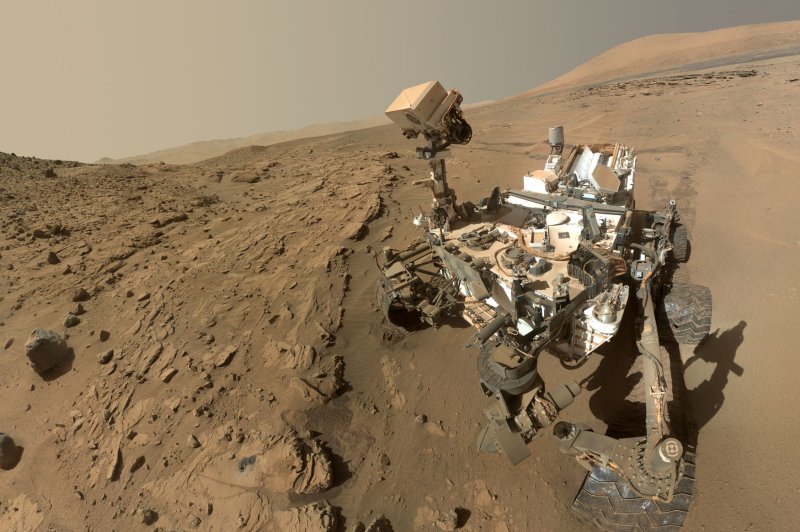Mars rover technology is being adapted to detect pipeline gas leaks on Earth. UPI/NASA |
License Photo
PASADENA, Calif., Oct. 2 (UPI) -- Leaks in natural gas pipelines can lead to dangerous explosions, as well as the polluting of drinking water and the release of methane into the atmosphere. Each year, gas leaks result in some 17 fatalities and $133 million in property damage.
To curb the number of leaks and decrease the length of time that leaks go undetected, one energy company is partnering with scientists and engineers at NASA's Jet Propulsion Laboratory in Pasadena, California. This week, the Pacific Gas and Electric Company announced it was working with scientists from the Mars rover program to adapt gas-detection technology for pipeline safety here on Earth.
The newly-adapted hand-held tablet device -- featuring laser-guided sensors that are hypersensitive to methane -- will more accurately and efficiently alert safety analysts to pipeline vulnerabilities, allowing repairs to be made sooner before small leaks become large ones. On the Red Planet, the technology is being utilized by for largely the same purpose -- to detect methane.
"Our pursuit of this technology is evidence of our commitment to our mission of becoming the safest, most reliable utility in the country," Nick Stavropoulos, PG&E's executive vice president of gas operations, said in a press release. "We are using out-of-this-world technology to find and fix even the smallest leaks in our system. By investing in innovation today, we are helping build a positive energy future."
Though the device is still being tested, officials say they expect pipeline safety personnel to be armed with the new technology by next year.
"It's rewarding to be involved in projects that translate JPL technological capabilities to meet industry needs, technologies which ultimately should help enhance safety and reliability," said Andrew Aubrey, JPL technologist at Caltech. "PG&E's role as a collaborator with JPL on our PRCI-funded effort is essential to efficiently adapt the JPL methane sensor into a field-ready hand-held leak detection system."
Of course, detecting leaks is just part of a much more complex and widening problem. A detection device can't stop leaks themselves, and leaks are becoming more and more frequent in some of America's aging pipelines. One recent report suggests there are more than 6,000 gas leaks under the streets of Washington, D.C.
And it's not just the nation's capital. In Mississippi, nearly half of the state's gas pipes were built prior to 1970; nationwide, that number is 38 percent. In Pennsylvania, where some pipes are more than 90 years old, billions of dollars are needed to address widespread gas leaks.















